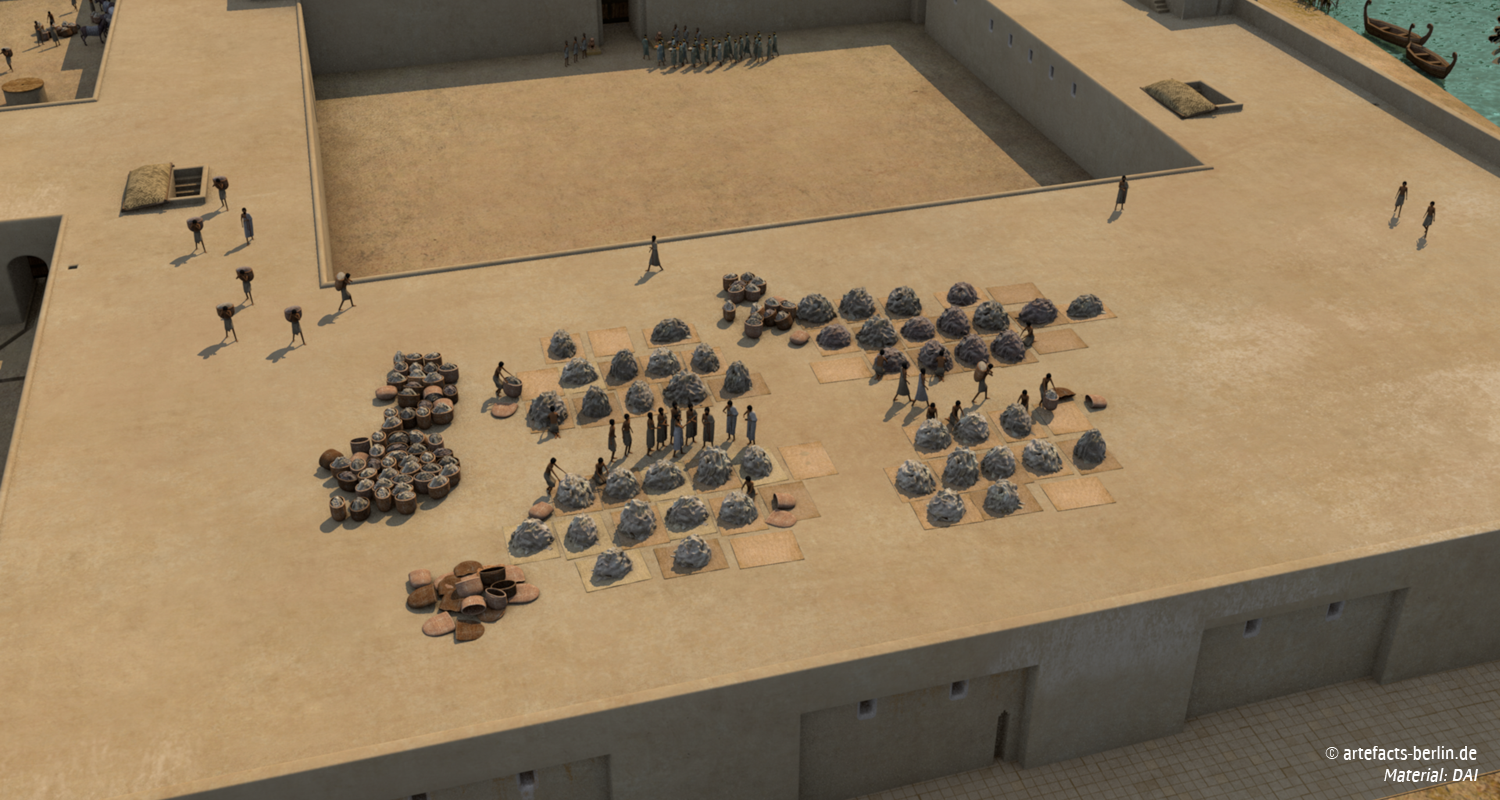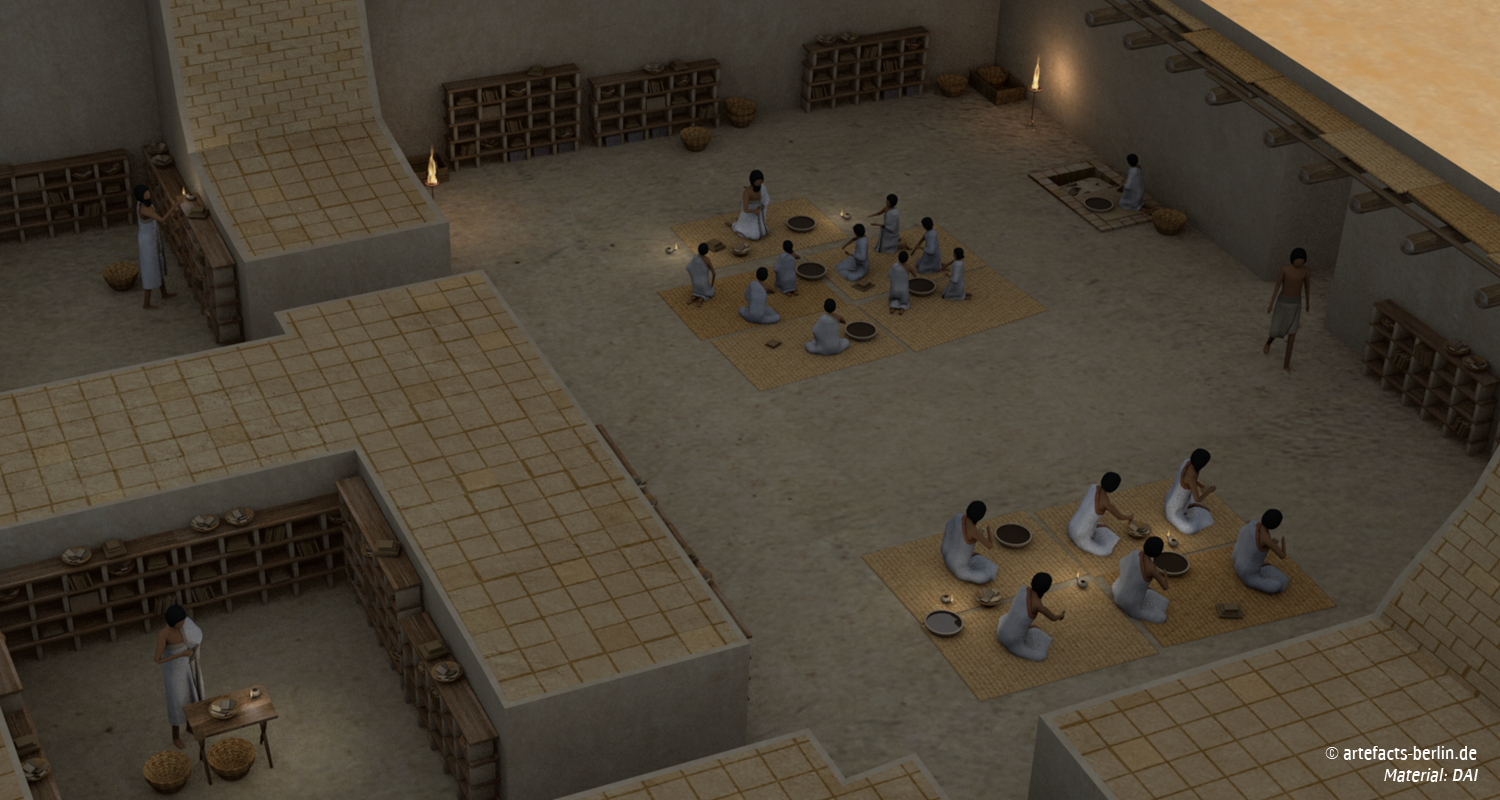About the project
Uruk/Warka, situated in modern-day Iraq, is one of the first cities in the world and was populated almost without interruption for over 5,000 years – from the 4th millennium BCE to the 1st millennium CE. In the Old-Babylonian Period, Sin-kashid founded his dynasty and built his palace in the western part of the city around the mid-19th century BCE.
The palace measures around 142 x 102-116 metres and therefore encompasses an area of about 15.500 square metres. The building was constructed in two parts, that divide roughly at the two elongated courts in the centre. Four general areas could be distinguished: The representational area, storerooms, administration of commodities and the residential area.
The animation shows the different areas and offers an insight into the palace economy and the everyday life. Small-finds that were found in the palace and texts that refer to the palace were included in our animation. Every detail was researched to create a reconstruction that gives an insight into the world of Old Mesopotamia.
The results of our work were presented within a large exhibition about Uruk, called ‘Uruk – 5000 years of the megacity’, in the Pergamon Museum in Berlin, and subsequently at the LWL-Museum für Archäologie, Herne, in 2013/14.
Literature
- Fügert, A. 2004: Eine funktionale und vergleichende Analyse der Räumlichkeiten des Sinkašid-Palastes in Uruk unter Einbeziehung seines Fundinventars, unpublizierte Magisterarbeit an der Freien Universität Berlin.
- Fügert, A./Sanati-Müller, S. 2013: Der altbabylonische Palast von Uruk und seine Texte, in: Crüsemann, N. et al. (Hrsg.), Uruk – 5000 Jahre Megacity. Ausstellungskatalog, Petersberg, 243-251.
- Hageneuer, S. 2019: “Uruk”, in: ANTIKE WELT Jubiläumsheft “Auferstehung der Antike. Archäologische Stätten digital rekonstruiert”, Wissenschaftliche Buchgesellschaft: Darmstadt, 10-11.




